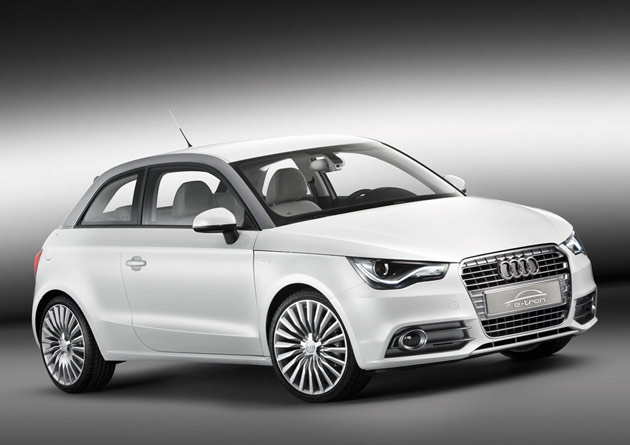Filed under: Concept Cars, Hybrid, Geneva Motor Show, Hatchback, Audi, Electric
After teasing us with a few goodies yesterday, Audi has just released technical details on its new A1 e-tron concept that debuts later today at the Geneva Motor Show. As we already knew, the A1 uses an extended range electric architecture like the Chevrolet Volt, but with a compact and power-dense Wankel rotary engine/generator to keep the battery alive after power from the grid is depleted. The diagrams released by Audi show that the Wankel is mounted in the car’s rear behind the T-shaped battery pack that sits mostly under the rear seat.
The lithium ion battery pack has a capacity of 12 kilowatt-hours, which is claimed to provide about 30 miles of range on a charge. Unlike the 1,000+ pound pack in the original e-tron concept, this unit weighs in at just 330 pounds. The electric motor provides a standard output of 45 kW or 61 horsepower, though peak power of 75 kW or 102 hp is available in short bursts and keeps the car’s 0-62 mile-per-hour time around 10 seconds. The motor and all of the power electronics reside in the car’s front where the internal combustion powerplant of a conventional A1 would normally be found.
The Wankel weighs in at just 154 lbs and displaces just 254 cc of volume in its single rotor. The whole unit is small enough to sit below the cargo floor of the A1. Running at a constant 5,000 rpm, the rotary motor can extend the A1 e-tron’s range to 130 miles. Why not longer? The fuel tank holds only 3.17 gallons. With the Wankel running, Audi says the A1 e-tron will return about 124 miles per gallon U.S.
Of historical note, the first ever production car with a Wankel rotary engine was introduced by NSU back in 1964. NSU later merged with Auto Union, which also included Audi, the sole surviving brand of the group.
Gallery: Audi A1 e-tron concept
[Source: Audi]
Continue reading Audi A1 e-tron runs like Volt, advances ER-EV concept
Audi A1 e-tron runs like Volt, advances ER-EV concept originally appeared on Autoblog on Mon, 01 Mar 2010 23:35:00 EST. Please see our terms for use of feeds.





